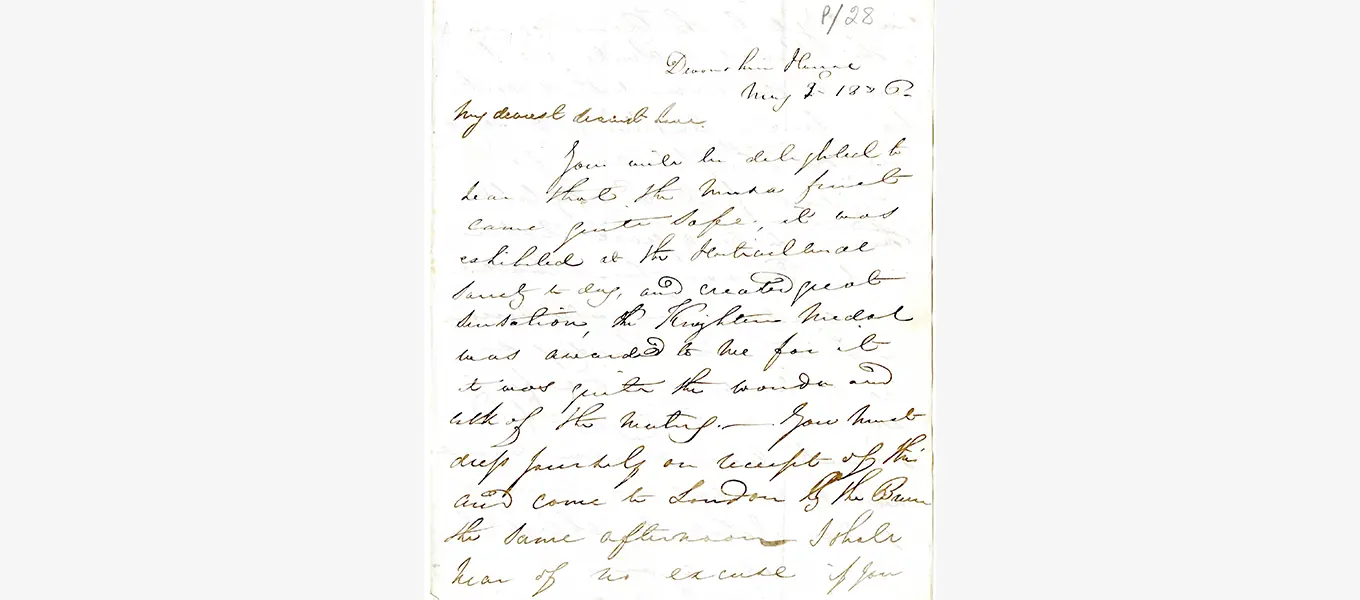As head gardener from 1826 to 1858 Joseph Paxton played a fundamental role in creating many of the early garden features and planting schemes at Chatsworth; these became the foundations of the garden our visitors know and love today. Self-taught in many disciplines, Paxton was renowned among his contemporaries for his extraordinary skill set. This included engineering, architecture, horticulture and science. However Joseph was not alone in his endeavours.

The Chatsworth House Trust holds a truly outstanding archive which provides a fascinating look into the history of the house, its residence and the surrounding garden and estate over the centuries. With so many stories to unlock we are always looking for ways to make the archives available to visitors, researchers, schools and others. In 2019 Chatsworth was awarded the Association of Independent Museums (AIM) Biffa History Makers award which provides grants to cultural facilities enabling them to tell the stories of lesser known historical figures and bring them to life.
The grant has enabled us to fully explore the life and work of Sarah and Joseph Paxton during their time at Chatsworth. Over 2,000 papers and letters relating to the Paxtons have been catalogued, new interpretation has been produced in the garden to engage visitors with their stories as well as online content. Education resources have also been made available to school groups and researchers via the Devonshire Educational Trust.

Within the mass of papers, over 400 letters were written by Sarah and catalogued. They were full of information on her day to day activities when Joseph and the Duke were travelling away from Chatsworth. In one letter she reports on the works of the Great Conservatory, the prequel to Paxton’s Crystal Palace:
“The conservatory is going on very well, in another fortnight the whole of the intermediate ribs will be made, they are now fixing things up for glazing”.

From letters like these we have been able to take a more in-depth look into her life and duties which included arranging payment for workers, recruiting staff both for the house and garden, dealing with tenants on the estate and also recording significant horticultural events such as the flowering of the Victoria Regia Lily for the first time in the UK. These stories plus many more are part of the social history at Chatsworth and have shaped the garden and landscape that we see today.
Amongst Paxton’s many projects, he designed and built a number of innovative glasshouses at Chatsworth which still stand. During the 1800s it became fashionable to collect and cultivate exotic tropical plants - the 6th Duke was no exception to this collecting passion and Paxton’s glasshouses enabled him to house his extensive tropical collection.
Bananas were just one of the tropical plants that made Joseph Paxton famous. The banana plant was a novelty among British gardeners and plant enthusiasts in the 1830s. Gardeners across England had tried and failed to get the plant to flower and produce fruit. Success came to Paxton who managed it first on behalf of the Duke and won a medal at the Royal Horticultural Society show for his efforts.

We are extremely grateful to have been chosen as part of the History Makers award by AIM Biffa – it has enabled us to create interesting and engaging interpretation for our visitors, to offer a new teaching focus for schools and students and to bring to life stories of the characters that shaped the garden we see today.
Why not visit the garden and discover the lives of Joseph and Sarah Paxton and view the footprint they left here at Chatsworth?






